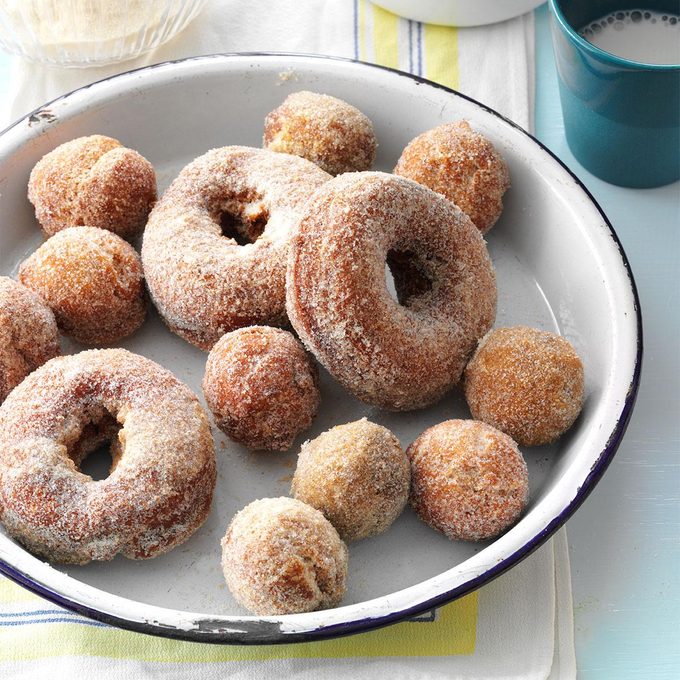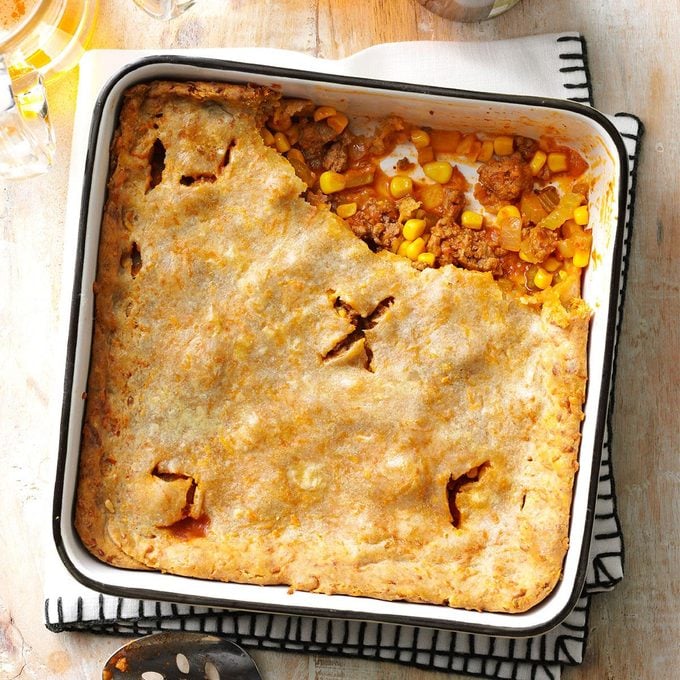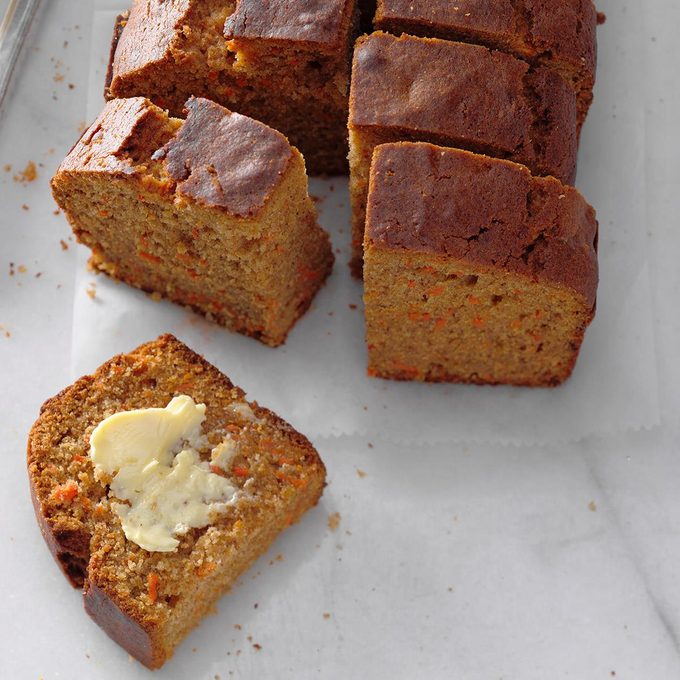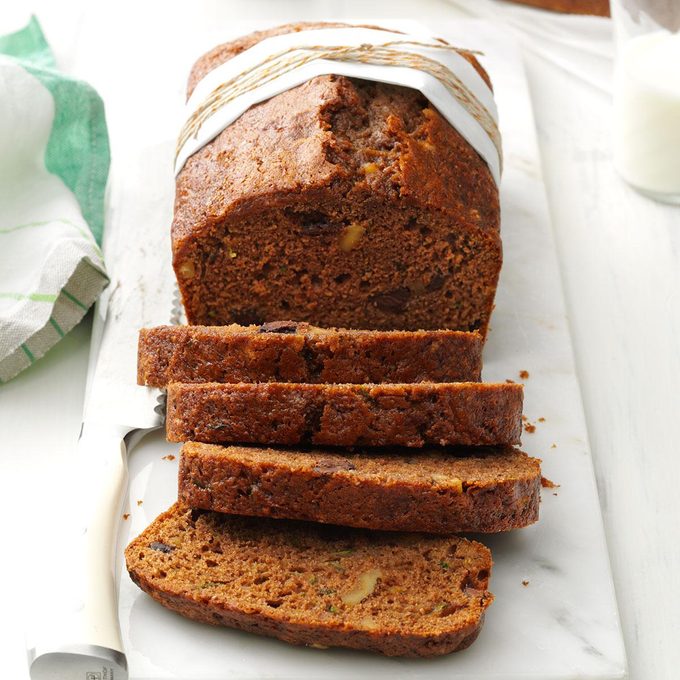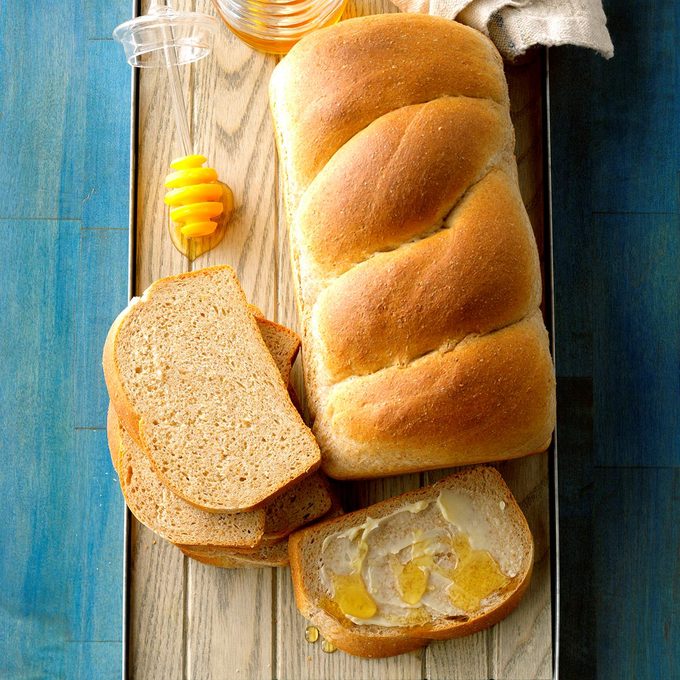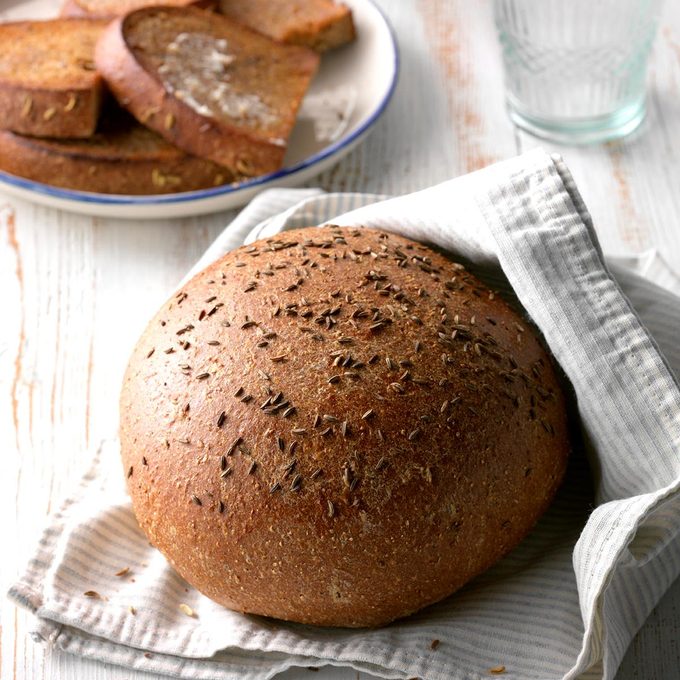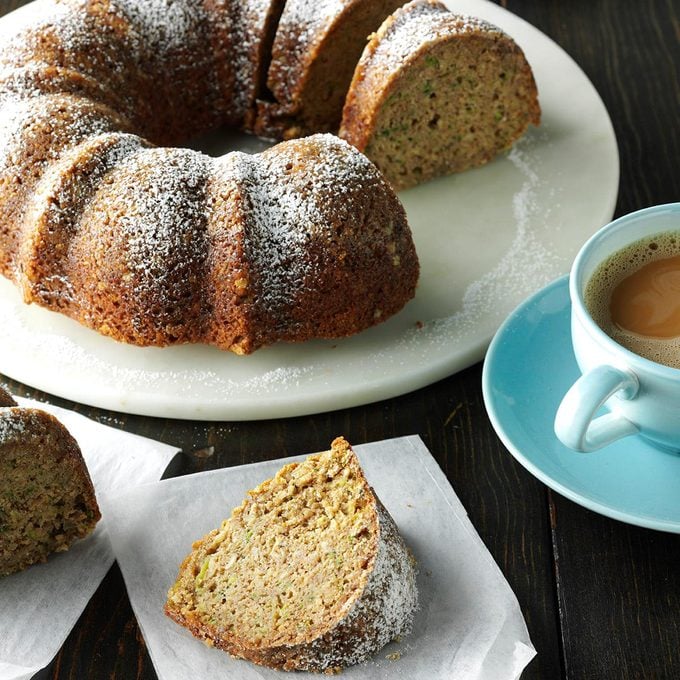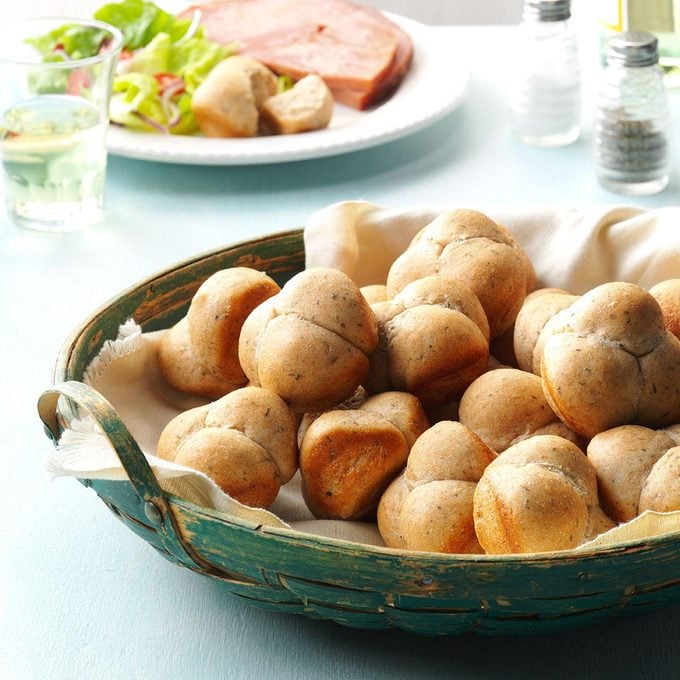Come home to the heavenly aroma of fresh-baked cinnamon rolls! This better-for-you version tastes just as decadent as a regular cinnamon roll, but it smartly sneaks in some whole grains. —Nick Iverson, Denver, Colorado
Get Recipe
Nothing says spring better than a fresh strawberry shortcake. It is heavenly. My mother and I usually make this with strawberries we picked ourselves. —Sarah Hatter, Brodhead, Wisconsin
I created these soft, sparkly cookies because my sister loves cinnamon French toast covered in maple syrup. In the case of these cookies, bigger is definitely better! I like to use white whole wheat flour, but any whole wheat flour will work.—Mary Shenk, Dekalb, Illinois
With their pleasant wheat flavor and a honey of a glaze, these rolls impress my guests. Every time I take them to potluck dinners, I come home with an empty pan. —Nancye Thompson, Paducah, Kentucky
Whole wheat flour gives nutritious flair to these healthy blueberry muffins. Fresh from the oven, they’ll warm you up on cold, winter days. —Sheila Siem, Calumet, Michigan
This decadent Swedish apple pie serves up homemade flavor in every bite. This is a perfect snack with coffee or as an after-dinner treat. —Sarah Klier, Grand Rapids, Michigan
The way my boys eat them, I would spend a fortune on honey graham crackers at the grocery store. So I decided to make a homemade version that is less processed—and less expensive. These are wonderful, although they still don't last long. —Crystal Jo Bruns, Iliff, Colorado
My kids love homemade banana bread, so why not make it in pancake form? These freeze well for a special breakfast any day. —Ally Billhorn, Wilton, Iowa
We lightened up biscuits and gravy to curb our guilt for eating them the day after having pancakes. Here’s a terrific homemade recipe for brunch guests. —Ian Cliffe, Milwaukee, Wisconsin
Apple doughnuts remind me of family trips to South Dakota. We’d stop at Wall Drug for a dozen or so before camping in the Badlands. Maple glaze was and still is my favorite. Share a batch with friends and family who appreciate a hot, fresh apple cider doughnut. —Melissa Hansen, Milwaukee, Wisconsin
For more than a dozen years, this has been the No. 1 dish to serve company at our house. So far, everyone has given it a thumbs-up rating. —Hannah McDowell, Penns Creek, Pennsylvania
Pizza, egg pockets, stromboli—this make-ahead whole wheat pizza dough has endless potential for quick and impressive breakfasts, lunches or dinners. —Taste of Home Test Kitchen
These crunchy treats feature fresh, ground and crystallized ginger, making them a bit more special than the traditional cookie. They are always a hit around the holidays. —Jessica Follen, Waunakee, Wisconsin
As a busy health-care professional and mom, one of the most meaningful gifts I give to the people I love is my time and skills in the kitchen. I have been baking since I was 7 years old and while I still am an avid baker, raising three children, caring for three dogs and working full-time leaves me with little energy! My family appreciates all my efforts and this is a favorite extra "gift" I give people for special events like a housewarming or welcoming a new baby. It is especially good toasted with butter. —Krystal Horudko, Charlottetown, Prince Edward Island, Canada
A colleague brought this in one day for someone’s birthday. I grow zucchini in my garden so I had a lot of opportunities to experiment with the recipe. My mother-in-law loves it, and not just because it's pretty good for you! —Sally Newton, Smethport, Pennsylvania
People tend to snap up these fluffy, golden rolls, in a hurry whenever I take them to a potluck. It's a nice contribution since rolls are easy to transport, and one batch goes a long way. — Carol Forcum, Marion, Illinois
When I started making this bread, my husband and our six children liked it so much that I was baking every day! I was thrilled when the judges at our county fair gave these braids both a blue ribbon and a best of show award! —Nancy Montgomery, Hartville, Ohio
Whole wheat flour and two kinds of berries add an extra helping of nutrition to these hearty pancakes. It’s a breakfast I feel good about eating. —Sarah Haengel, Bowie, Maryland
These pumpkin banana muffins are the perfect bite-sized snack for fall. —Desiree Rasch, Blue Springs, Missouri
These rustic loaves have plenty of sage flavor—a tasty addition to any feast.
— Beth Dauenhauer, Pueblo, Colorado
My kids love to get pizza delivered, but it's expensive and not very healthy. I came up with a one-bowl pizza that is healthier than delivery and allows the kids to add the toppings of their choice. —Sara LaFountain, Rockville, Maryland
These tender rolls are relatively quick to make. Whole wheat flour and oats make them nutritious, too.—Arlene Butler, Ogden, Utah
A drizzle of caramel complements the apple and whole wheat flavors of these rustic-looking scones. —Arlene Cook, Bainbridge, Georgia
I received this recipe from a friend who was moving into a new apartment. To celebrate, she made this bread to share and now it is served at many of my family functions.—Robin Haas, Cranston, Rhode Island
Oats and whole wheat flour make these tasty pancakes extra hearty. Try them with applesauce spooned on top! —Jeri Tirmenstein, Apache Junction, Arizona
Cranberries, walnuts, brown sugar and orange peel help give this apple-packed crowd-pleaser its rich flavor. After the first taste, guests will be asking for the recipe...and a second helping.
—Diane Everett of Newtown, Connecticut
Pairing the old-fashioned flavor of peanut brittle with yummy chocolate chips turns these bars into a satisfying treat and a sought-after holiday gift. —Kristin Gleason, St. John, Kansas
This healthy carrot cake recipe is moist, tender and delicious. Kids will love it because it's sweet, and you'll love it because it's packed with good-for-you carrots. —Brenda Rankhorn, New Market, Alabama
My sister and I were in 4-H, and Mom was our breads project leader for years. Because of that early training, fresh homemade bread like this is a staple in my own kitchen.
-Karen Wingate, Coldwater, Kansas
These pumpkin pancakes are also delicious served with butter or whipped topping and a sprinkle of pumpkin pie spice. Freeze any extras in a single layer on a cookie sheet, then store in a freezer bag. They're great fresh out of the toaster! —Mindy Bauknecht, Two Rivers, Wisconsin
This whole wheat apple cinnamon bread recipe contains quite a bit of applesauce, which provides natural sweetness so you use less sugar. As a bonus, it also allows for a minimal amount of oil to be used. —Sherry Craw, Mattoon, Illinois
Who says cookies aren’t for breakfast? We devour these hearty oatmeal cookies, especially on the run. Add any dried fruits and nuts you have on hand. —Lea Langhoff, Round Lake, IL
This gorgeous rye bread has just a touch of sweetness and the perfect amount of caraway seeds. With a crusty top and firm texture, it holds up well to sandwiches, but a pat of butter will do the job, too. —Holly Wade, Harrisonburg, Virginia
The first time I made this, I gave some to my daughter, who hates zucchini, and she said it was the best thing I ever made! It has been an excellent and wholesome way to use up all of the zucchini from my garden. If using thawed shredded zucchini, make sure to drain very well. —Tammy Kirsch, Arcade, New York
These rolls have been a favorite of ours for nearly 25 years. I even baked them in an old wood stove when we lived on a farm. I developed the recipe using several techniques I learned while studying the art of bread making. The recipe won a blue ribbon at our county fair. —Mary Ann Evans, Tarpon Springs, Florida
My daughter and I prepare this Indian flatbread frequently. It is so fun to make and goes well with any spiced dish. We use the extras to make sandwich wraps. —Joyce McCarthy, Sussex, Wisconsin
What's great about this wild mushroom pizza is you don't need to worry about finding the right toppings. Whatever wild mushrooms are in season or at your market will work beautifully. I like to get as many different ones as possible. —James Schend,
Taste of Home Deputy Editor
Sweet with just the right amount of spice, these easy waffles make it nearly impossible to skip your morning meal. —Barbie Miller, Oakdale, Minnesota












